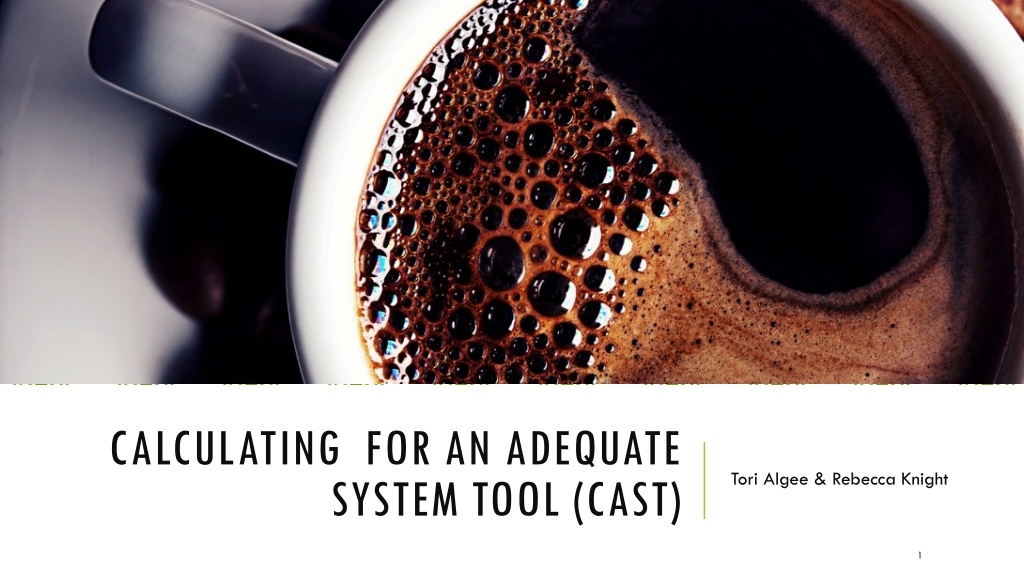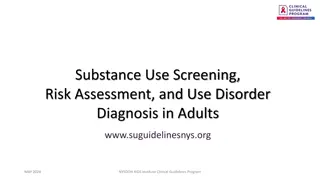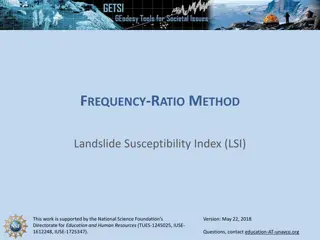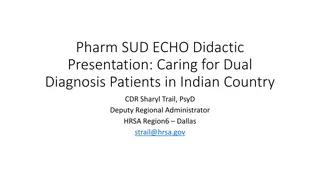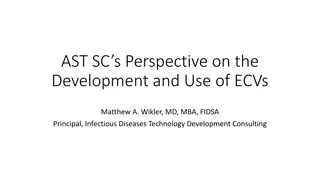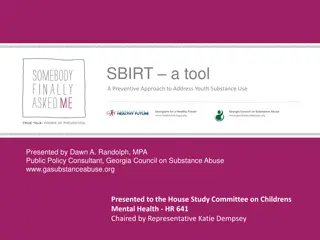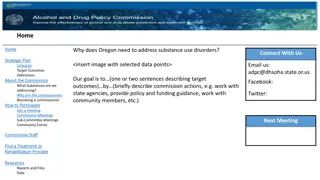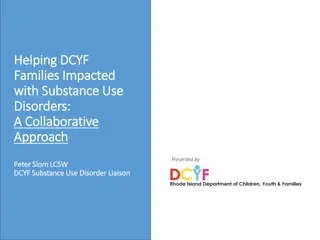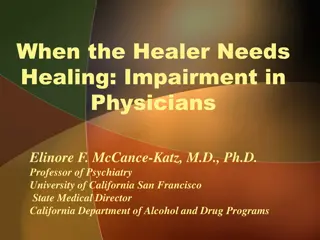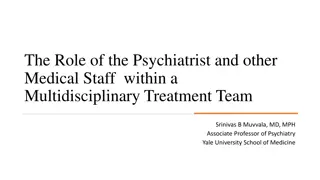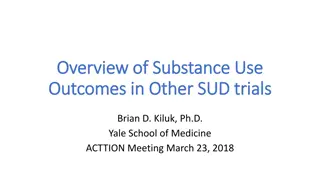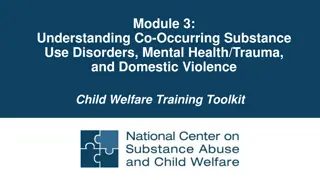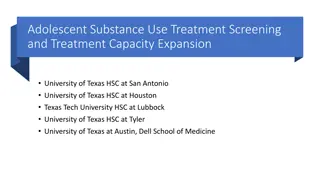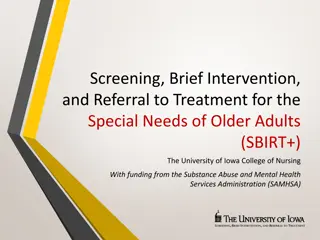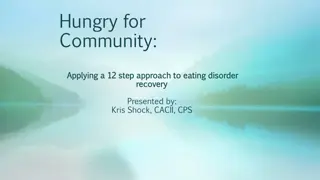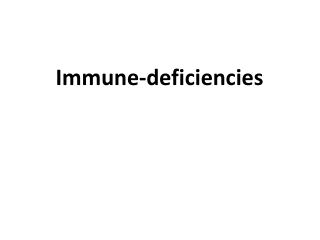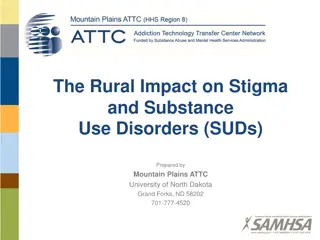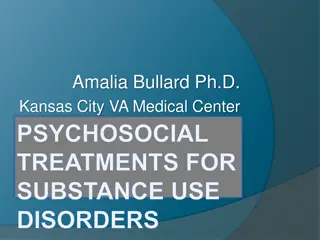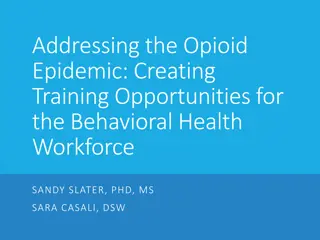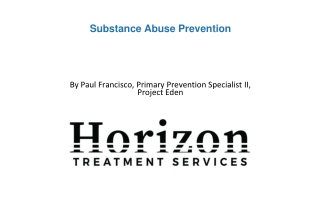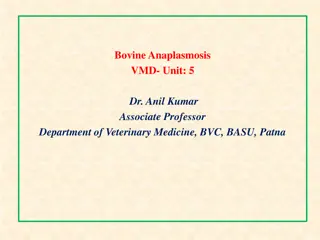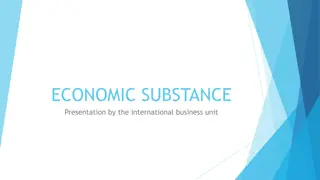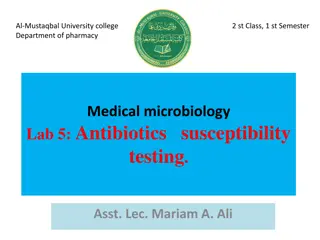Understanding CAST: A Tool for Assessing Community Susceptibility to Substance Use Disorders
CAST (Calculating for an Adequate System Tool) is a tool developed by researchers at SAMHSA to assess the protective capacity of a community and its susceptibility to Substance Use Disorders (SUD). It considers various community determinants such as demographics, social factors, and access to resources to calculate the likelihood of adverse substance use outcomes. By analyzing data on factors that contribute to higher SUD rates, CAST helps categorize regions into low, medium, or high-risk levels for substance use disorders.
Download Presentation

Please find below an Image/Link to download the presentation.
The content on the website is provided AS IS for your information and personal use only. It may not be sold, licensed, or shared on other websites without obtaining consent from the author. Download presentation by click this link. If you encounter any issues during the download, it is possible that the publisher has removed the file from their server.
E N D
Presentation Transcript
CALCULATING FOR AN ADEQUATE SYSTEM TOOL (CAST) Tori Algee & Rebecca Knight 1
BACKGROUND CAST was developed by an interdisciplinary group of researchers at the Substance Abuse and Mental Health Services Administration (SAMHSA) Center for Behavioral Health Statistics and Quality (CBHSQ) 2
WHAT CAST REVEALS Protective Capacity of a community to meet the need of a region How susceptible is this community to SUD Community Substance Use Disorder rate 3
COMMUNITY SUSCEPTIBILITY Community Determinants in CAST Individual Demographics Data Source Rate of associations per 100,000 US Census (NAICS codes 813) Gender (Percentage of adult population that is male) US Census Age (Percentage of population 18-65) US Census Alcohol outlet density rate per 100,000 CDC Race (Percentage of population non-white (including Hispanic)) American Community Survey (ACS) (5-yr estimates) High Intensity drug Trafficking Area designation National HIDTA Assistance Center Social Determinants in CAST Violent Crime rate per 100,000 County Health Rankings High School Drop out rate (sum less than 9th and 9th to 12th no diploma) ACS (5 year estimates) Percent of population with access to physical activity County Health Rankings Veteran population (count) ACS (5 year estimates) Percentage of population living in rural area US Census Percentage of households with income below $35,000 (sum all low-income categories) ACS (5 year estimates) CAST uses the total population of a community as well as a set of indicators to calculate a community s likely adverse substance use outcomes Percentage of population widowed or divorced ACS (5 year estimates) Percentage uninsured US Census Small Area Health Insurance Estimates 4
COMMUNITY SUBSTANCE USE DISORDER RATE CAST uses national data and research on factors that increase the likelihood for a county or region to have higher than the national median for hospitalization due to SUD s. Low Risk The aggregated calculated risk score for the region is less than or equal to the national median. Medium Risk The risk score is between 0-25% above the national median High Risk The risk score is more than 25% above the national median 5
COMMUNITY LOCATION 9 Tribal Nations, with consent and as appropriate 36 Counties 6
COMMUNITY SUBSTANCE USE DISORDER RATE OUTCOME EXAMPLE 7
SUBSTANCE USE DISORDER DRUG OF CHOICE Of those who likely have a SUD, the formula below is used to determine the number of individuals likely addicted to each substance Total Population of County or Region Usage rate Alcohol 24.2% Marijuana 13.9% Cocaine 1.9% Opioid Misuse (Heroin and opioid pain relievers) 4.4% Pain Reliever and prescription psychotherapeutics 6.9% 8
COMMUNITY CAPACITY Community Capacity is based on the number of SUD continuum of care resources within the community. The community based information is typically gathered from publicly available resources as well as from community partners via targeted surveys of community providers and stakeholders (e.g. law enforcement, coalitions, faith-based organizations) 9
Example Nevada: Capacity Assessment Report 10
COMMUNITY PRIORITIES EXAMPLE NEVADA 11
PROS AND CONS OF CAST Pros: Cons: CAST is best evidence available from the current scientific literature CAST is limited by the interpretation of the terms for each component CAST overestimates the number of citizens likely seek help CAST is the only assessment tool used to look at the continuum of care of substance use CAST requires detailed data from the county level which will require additional dedicated staff CAST spreadsheet is available to the public for free and the creator is willing to assist with questions CAST is still being piloted and updated as needed 12
